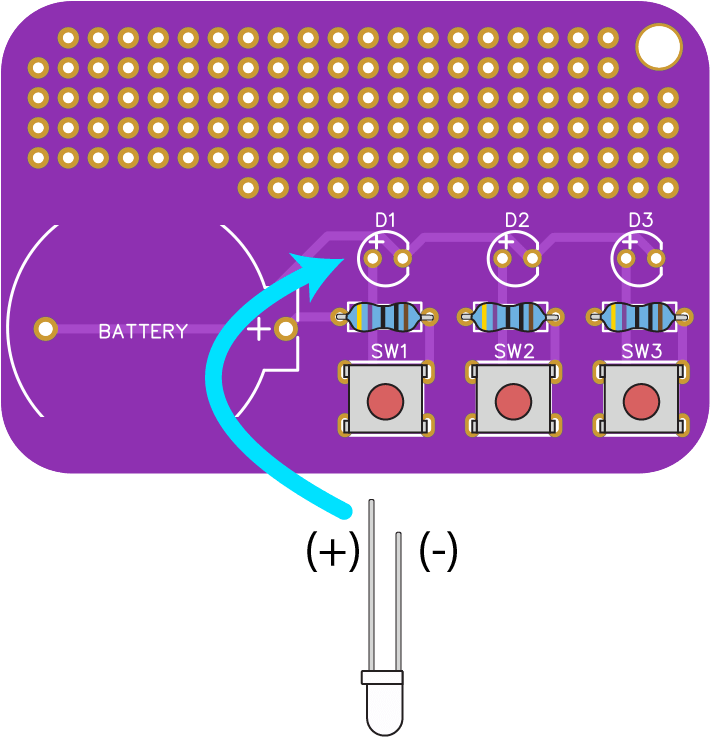Light Emitting Diodes (LEDs)
Orientation matters for LEDs. They have a polarity. Current only flows through LEDs in one direction.
The longer lead, called an anode, goes on the positive side which is marked with a "+" on the PCB.
The shorter lead, called a cathode, goes on the negative side which is indicated on the PCB with a flat section of the LED outline. If you look closely at the LED itself, you'll find it also has a flat side which is useful for determining the polarity if its leads have been clipped.
The shorter lead, called a cathode, goes on the negative side which is indicated on the PCB with a flat section of the LED outline, matching the flat side of the LED body.
Insert the LED into the D1, D2, or D3 spots on the PCB.
Bend its leads outward slightly to hold it in place, just as you did with the resistors.
Solder it into place, taking care not to overheat it. LEDs are a type of diode, and diodes are more susceptible to damage from heat than resistors.
Repeat with the other two LEDs.

